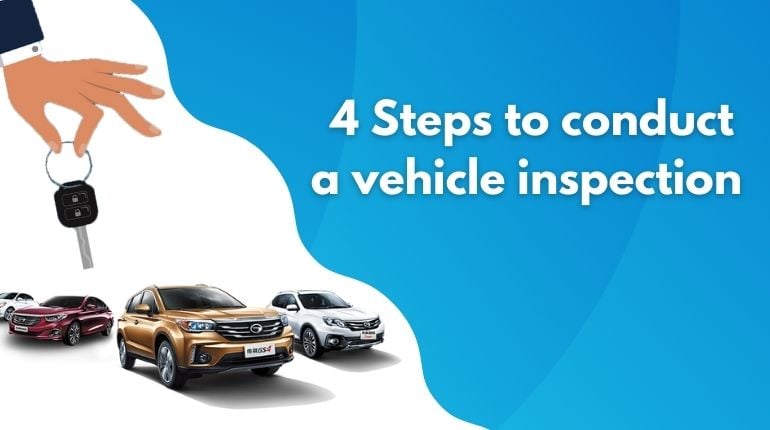Buying a used car can save you a lot of money over a brand-new model, but it comes with its own risks as well. Surely, we need to ensure that we have made the right purchase and aren’t bought something that useful for you. However, every used car is different from the other. So, how would you know if the car you want to buy has possible problem areas?
Our comprehensive guide provides all the information you need to buy with confidence and get the best deal possible.
Avail 30% Off
The following advice will cover every step of the car-buying process, from deciding where to buy to what to look for when inspecting the vehicle to how to handle negotiations and your buyer’s rights.
Four steps for inspecting a used car
Need to do car inspection by yourself, but not sure how and where to start? Then you’ll have expert knowledge of what to look for, all outlined in four easy steps to make it easier to remember.
STEP 1. Outside of the car
First take a wake around the car’s outside and look for the general damages. Generally, you need to pay more attention to the following things deeply:
Condition of the structure: When you are examining condition of the car’s body, you need to look into the following points deeply;
- Large gaps or misaligned panels
- Mismatched pain, scraps, dents and damages
- Rubber seals on all doors, trunk and hood of the car
- Rusted spots especially on wheels and car’s body
- Inspect the glass cracks
If you’re in the market for a reliable used car and want a trusted dealership, consider exploring options at Dahlford. They are known for their commitment to quality and customer satisfaction.
Suspension: Firmly push down on each corner of the car to test the shock absorbers. The car should only bounce once, not bounce up and down. Make sure the vehicle is level as well by circling it.
Tyres: The sound of clinking or ticking may indicate faulty bearings or suspension joints. The condition of the tyres also indicates how aggressive the driver is; heavy wear on the outside shoulders is a sign of aggressive driving. Similarly, uneven wear along the circumference can be a sign of steering, brake, or suspension problems. Make sure the tread meets the legal standards of 1.6mm, and don’t forget to check the spare tyre, as well.
Additionally, consider the type of wheels you’re using; understanding the difference between rotary forged vs forged wheels can impact performance and durability. Make sure you’re well-informed about your wheel options to get the best out of your vehicle.
STEP 2 Inside the car
Get in the car and check out how comfortable each seat is, as well as whether there is enough room for you and your needs. Then you should look into the following: Look for scrapes, scratches, wear and tear and any other damages.
Switch on the air conditioner and make sure it works. On the part of mileage check the odometer and make sure the mileage matches the age. Before you start the engine turn the ignition and confirm the warning lights all deeply lights up.
Also, examine the windows are opening properly, wipers work, interior lights works and all test on electronics.
Recommended for you: Who has the cheapest hpi check?
STEP 3 A look under the hood
Check under the hood while the engine is still cold before taking the automobile for a test drive. Don’t be concerned if you notice dust and filth; this is quite natural. You should, however, look at the following:
- In Engine look for leaks and corrosion, the leak can be a dark brown oil on the engine block.
- Pay special attention to the timing belt, as it is the most expensive and crucial engine component to replace. Ensure it’s in good condition, without cracks or visible damage. The lifespan of a timing belt is usually 60,000-100,000 miles.
- Check for oil splashes under the engine compartment and inspect the dipstick. If you see water droplets, gray oil, or metal shavings when you wipe the dipstick on a cloth, don’t ignore them. These are all signs of expensive problems, such as a blown head gasket or cracked engine block. The oil should be dark brown/black or honey coloured if it has recently been changed.
- Coolant -look into the coolant reservoir by the radiator, if it’s milky or rusty, it may be a sign that the engine has serious issues, such as a blown head gasket. Coolant should be orange or green in colour.
STEP 4 Make a final choice
After you’ve completed all of your checks and had some time to consider the vehicle, you’ll need to make a final decision.
You can also verify the car’s service history and maintenance receipts to make sure the car has been well maintained. Also, run a car history check to get a clear picture of the car’s past.






